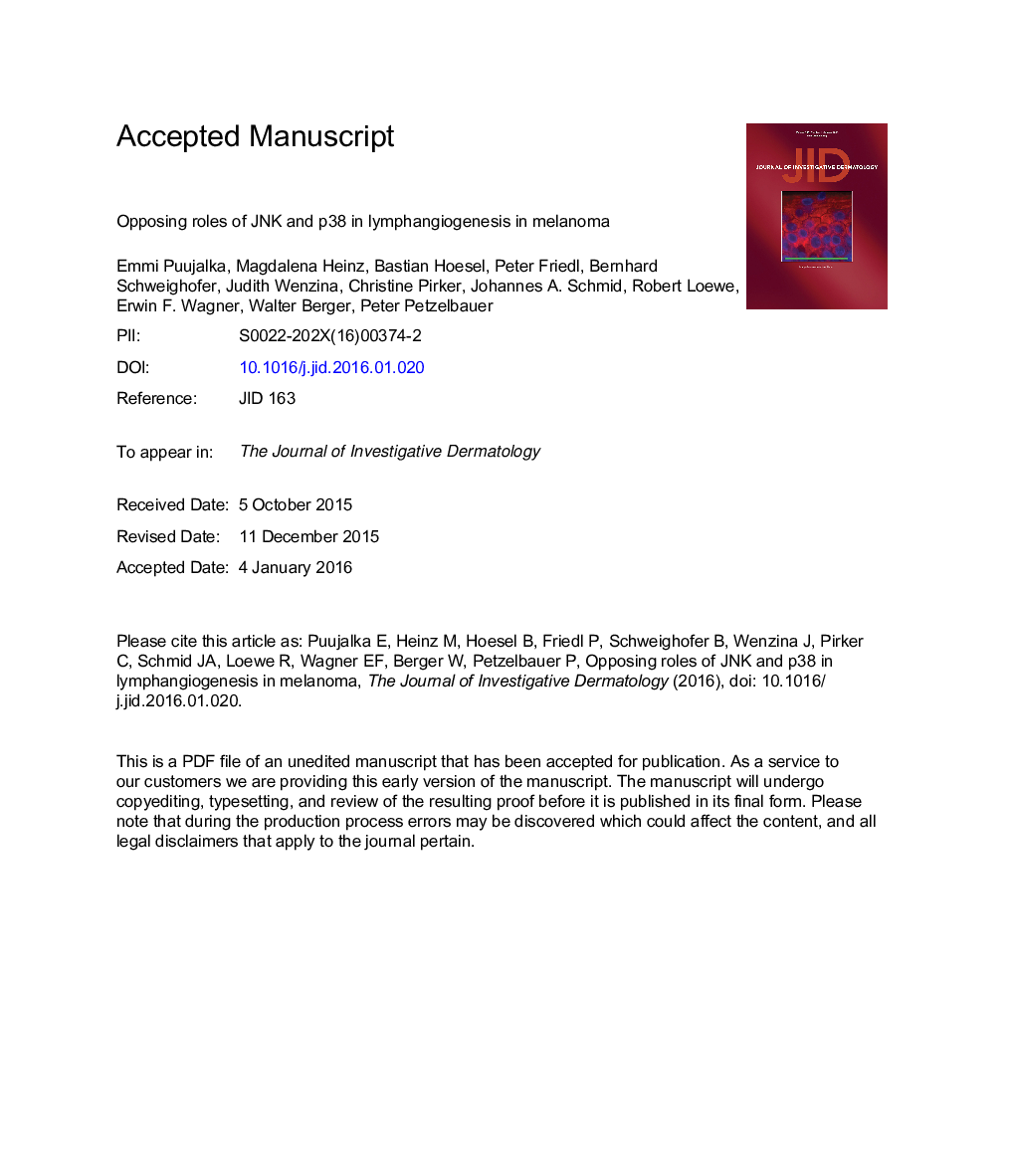| Article ID | Journal | Published Year | Pages | File Type |
|---|---|---|---|---|
| 6074956 | Journal of Investigative Dermatology | 2016 | 34 Pages |
Abstract
In primary melanoma, the amount of vascular endothelial growth factor C (VEGF-C) expression and lymphangiogenesis predicts the probability of metastasis to sentinel nodes, but conditions boosting VEGF-C expression in melanoma are poorly characterized. By comparative mRNA expression analysis of a set of 22 human melanoma cell lines, we found a striking negative correlation between VEGF-C and microphthalmia-associated transcription factor (MITF) expression, which was confirmed by data mining in GEO databases of human melanoma Affymetrix arrays. Moreover, in human patients, high VEGF-C and low MITF levels in primary melanoma significantly correlated with the chance of metastasis. Pathway analysis disclosed the respective c-Jun N-terminal kinase and p38/mitogen-activated protein kinase activities as being responsible for the inverse regulation of VEGF-C and MITF. Predominant c-Jun N-terminal kinase signaling results in a VEGF-Clow/MITFhigh phenotype; these melanoma cells are highly proliferative, show low mobility, and are poorly lymphangiogenic. Predominant p38 signaling results in a VEGF-Chigh/MITFlow phenotype, corresponding to a slowly cycling, highly mobile, lymphangiogenic, and metastatic melanoma. In conclusion, the relative c-Jun N-terminal kinase and p38 activities determine the biological behavior of melanoma. VEGF-C and MITF levels serve as surrogate markers for the respective c-Jun N-terminal kinase and p38 activities and may be used to predict the risk of metastasis in primary melanoma.
Keywords
Related Topics
Health Sciences
Medicine and Dentistry
Dermatology
Authors
Emmi Puujalka, Magdalena Heinz, Bastian Hoesel, Peter Friedl, Bernhard Schweighofer, Judith Wenzina, Christine Pirker, Johannes A. Schmid, Robert Loewe, Erwin F. Wagner, Walter Berger, Peter Petzelbauer,
